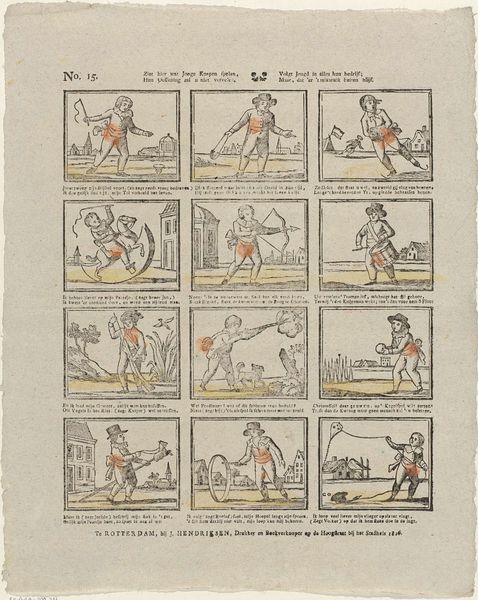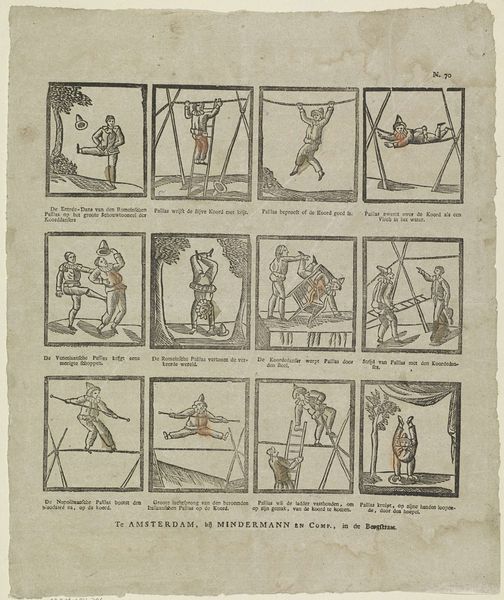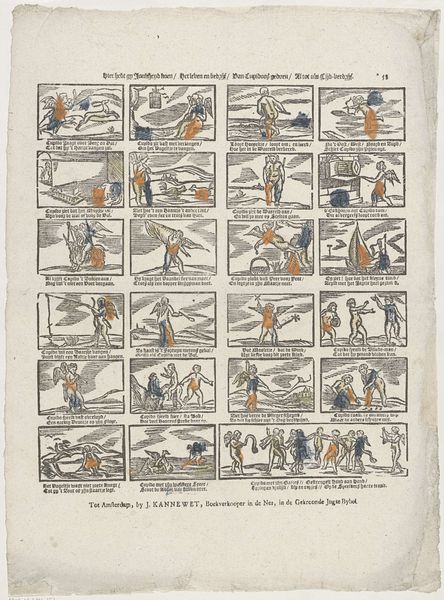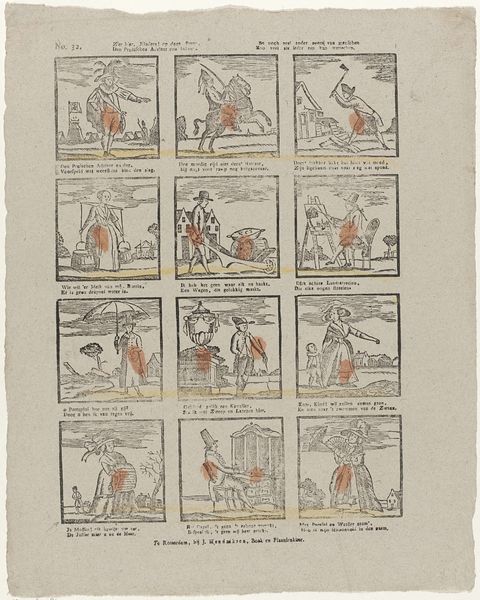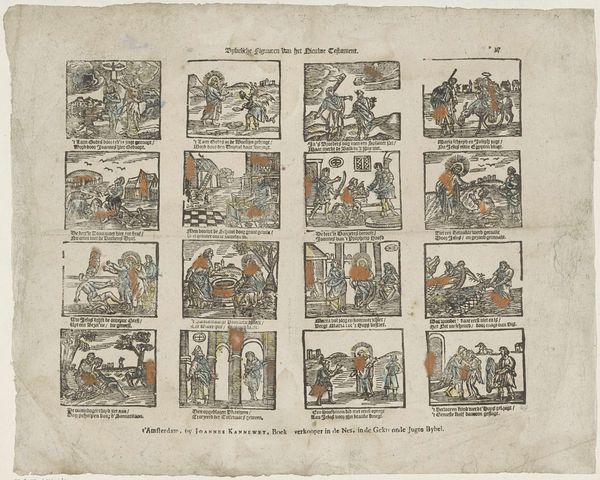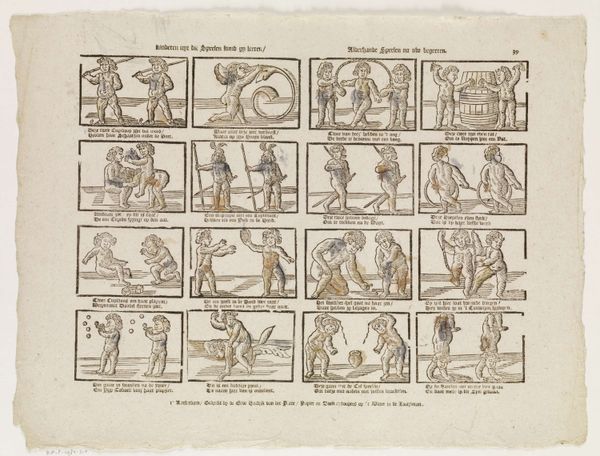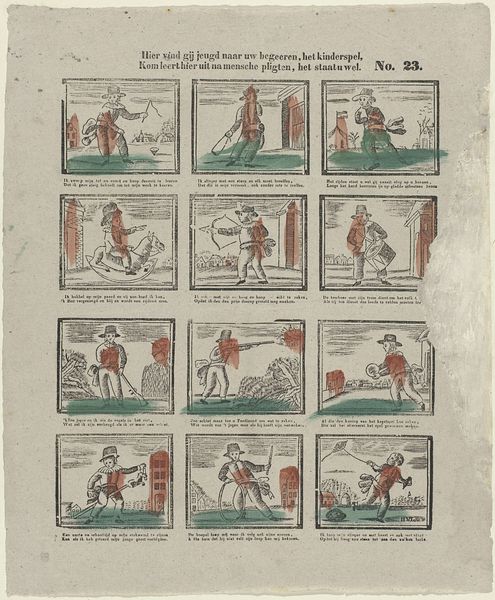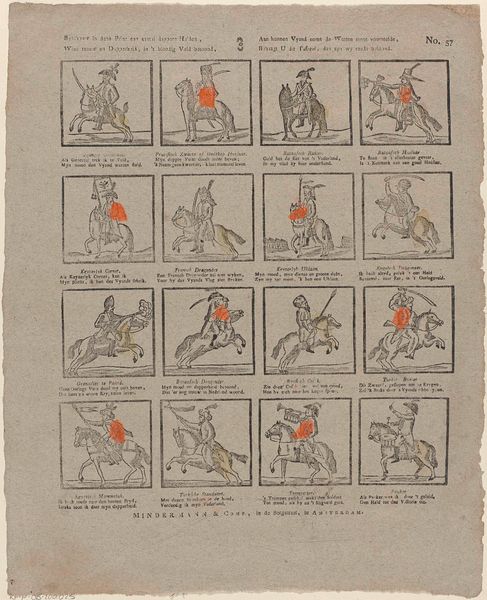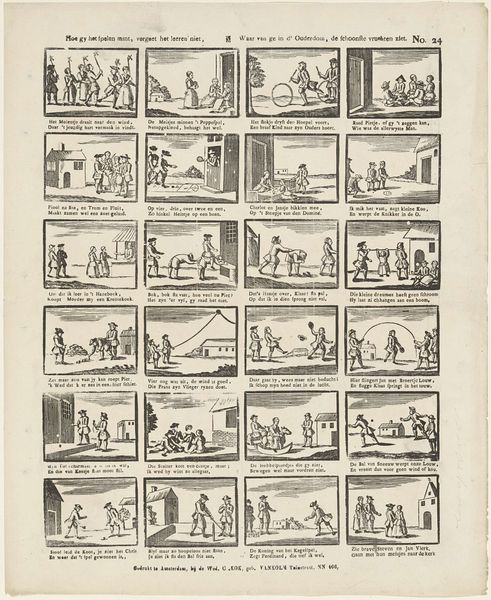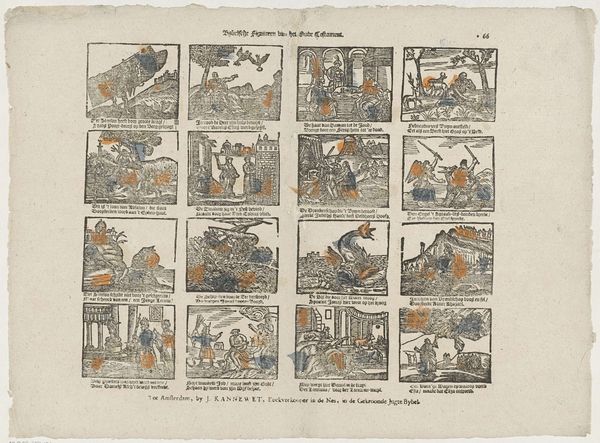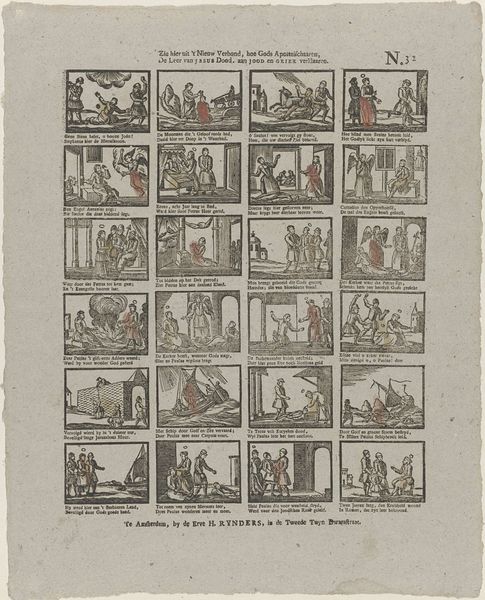
Wy zijn in Duytschlands oorlogs-velden / bekend / voor sestien oorlogs-helden 1770 - 1794
0:00
0:00
ervenhendrikvanderputte
Rijksmuseum
Dimensions: height 314 mm, width 412 mm
Copyright: Rijks Museum: Open Domain
Editor: This print, “Wy zijn in Duytschlands oorlogs-velden / bekend / voor sestien oorlogs-helden,” made sometime between 1770 and 1794, attributed to the Erven Hendrik van der Putte, is striking in its depiction of sixteen mounted military figures. There’s a definite sense of rigid order, almost like a playing card sheet. What exactly am I looking at here? How would you interpret this work in its historical context? Curator: It’s fascinating how you note the almost card-like rigidity. That speaks to the dissemination of power and status through print culture at the time. Think of this not just as a depiction of military figures, but an assertion of Dutch identity in relation to ongoing conflicts in the German lands. The late 18th century saw numerous shifts in European power. Editor: So, the "oorlogs-velden," the fields of war in Germany, suggest a politically charged atmosphere? It feels like these sixteen "heroes" are symbols as much as portraits. Curator: Exactly! These aren’t necessarily individualized portraits as much as types or representatives of military strength. Who gets to be remembered? Who decides? This print participates in shaping a very particular view of Dutch military prowess in relation to its neighbors. Notice, too, the level of detail given to their attire versus their faces; the symbols of rank are important here. How might its distribution impacted public sentiment? Editor: I hadn’t considered the question of national sentiment so directly. Now I’m wondering about how effective such a seemingly simple print would be in shaping opinions. Curator: Indeed. Consider the print’s affordability, its reach beyond elite circles, and the repetitive visual cues reinforcing a collective memory. That opens another field of exploration! Editor: Thanks for pointing that out. This quick overview really changes how I see its cultural role, beyond just being "historical figures." Curator: Precisely! Analyzing it not just as art, but as a vehicle for power, gives us a deeper understanding.
Comments
No comments
Be the first to comment and join the conversation on the ultimate creative platform.
